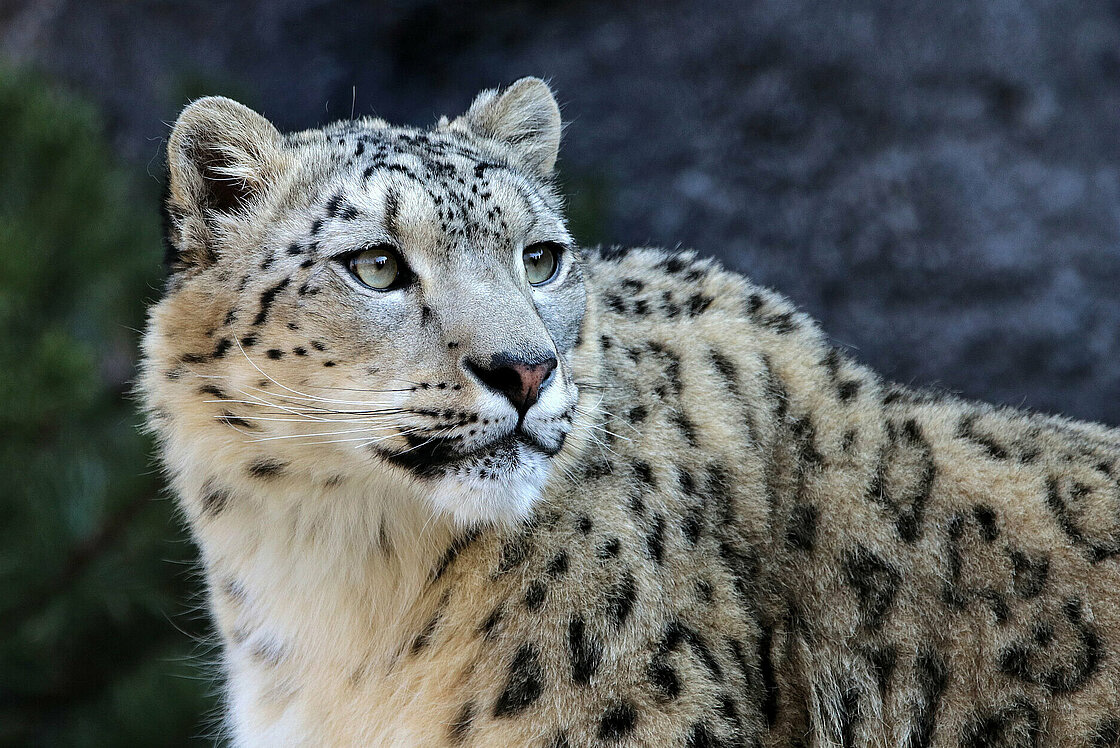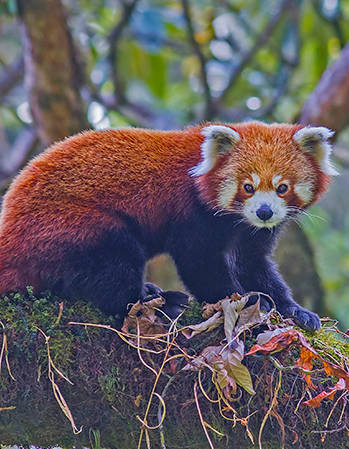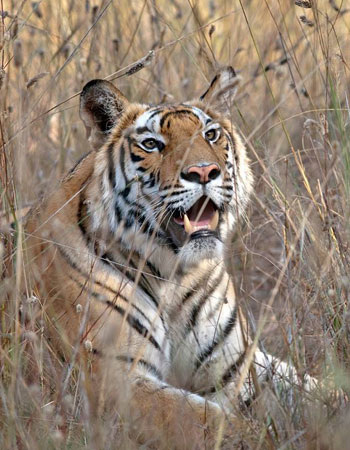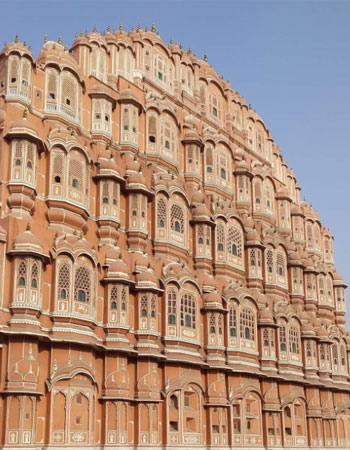Hemis National Park
How to Get there?
![]() 30 minute drive from Leh
Airport – well connected by flights from New Delhi, Srinagar, Mumbai, Kolkata and Bangalore.
30 minute drive from Leh
Airport – well connected by flights from New Delhi, Srinagar, Mumbai, Kolkata and Bangalore.
Type of Safari at the Park?
![]() he Landscape is
rugged and mountainous, walking is the way to get around Hemis. Camping is permitted inside
the National Park.
he Landscape is
rugged and mountainous, walking is the way to get around Hemis. Camping is permitted inside
the National Park.
History & Overview
THemis High Altitude is India’s largest National Park, spread over 4400 sq km. The mighty River Indus flows along the northern boundary of the park. U-shaped Valleys provide astounding views of a most magnificient part of Natural Ecosystem. Alpine Forests and Meadows, Cold Desert and Montane Forest characterise this area.
The landscape here comprises of 3 main different habitats :
- Mountainous region, which experiences heavy snowfall. Tall peaks surround the National Park extending from 5000m – 6000m above sea level. Wildlife and vegetation is sparse in this area.
- Rain-shadow region, which is comprises of rocky, rugged terrain. Rainfall is also scarce here, though small shrubs and trees survive here.
- The areas along the Streams are rich in vegetation, and numerous birds can be seen here.
It has been area of great promise for protection of the Snow Leopards, and the Park was thus sanctioned in 1981. Protection has ensured that there are almost 200 Snow Leopards in the landscape. Biodiversity is tremendous, and several interesting mammals and birds can be seen here.
Flora and Fauna
| Wildlife | Birds |
| Snow Leopard | Golden Eagle |
| Ladakh Urial | Lammergeier or Beared Vulture |
| Tibetan Argali | Himalayan Griffon |
| Asiatic Ibex | Himalayan Buzzard |
| Tibetan Wolf | Northern Goshawk |
| Brown Bear | Uplan Buzzard |
| Eurasian Lynx | Saker Falcon |
| Pallas’ Cat | Alpine Chough |
| Red Fox | Horned Lark |
| Tibetan Stone Marten | Fire-fronted Serrin |
Geography and Climate
| Area | 4,400 km² |
| Co-ordinates | 33.7187° N, 77.3882° E |
| Weekly Off | None |
| Functional Days | The summer pass is open from June, and the winter pass (half kilometre north-west of summer pass) is open from late April. |
| Rainfall | 160.5 millimetres |
| Forest Type | The park lies within the Karakoram-West Tibetan Plateau alpine steppe ecoregion, and contains pine forests, alpine shrublands and meadows, and alpine tundra. |
Enquire Tour
Tours
National Parks
Explore

Post - Tala, Bandhavgarh National Park, District - Umaria, Madhya Pradesh, Pin code - 484664
+91 9630507774, +91 9340711175Email : info@tigerjourney.in
© 2020 All Rights Reserved






